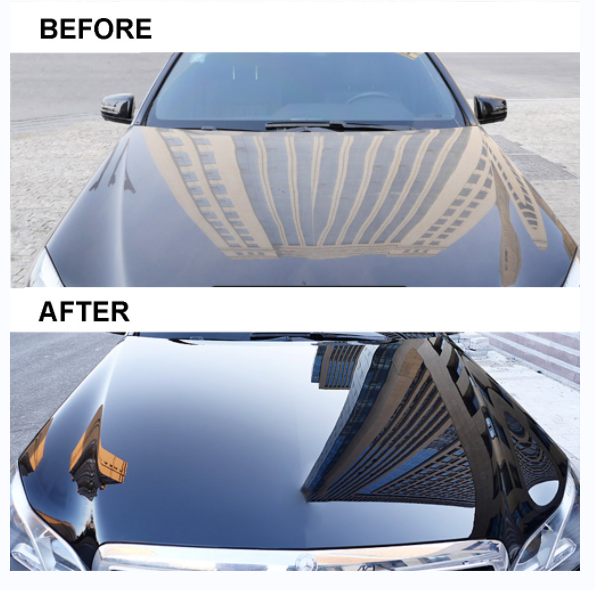A Comprehensive Guide to the Kinds Of Ceramic Layer on the marketplace
Ceramic finishes have emerged as a crucial remedy throughout numerous industries due to their distinct homes and applications. As we explore the distinct features and applications of these finishes, the implications for performance and durability end up being progressively obvious, increasing concerns about which kind might finest suit your needs.
Understanding Ceramic Coatings
Ceramic finishes are innovative safety remedies that have gained popularity in various sectors, especially in vehicle and aerospace applications. These coverings contain a liquid polymer that, when healed, creates a sturdy, hydrophobic layer on the surface of the substratum. This layer gives boosted resistance to environmental impurities, UV radiation, and chemical exposure, thereby prolonging the life and aesthetic allure of the underlying material.
The fundamental part of ceramic coatings is silica, which adds to their firmness and resilience. The application procedure normally entails surface preparation, application of the finishing, and curing, which can be attained through heat or UV light. Once healed, ceramic coatings exhibit phenomenal bonding buildings, allowing them to stick strongly to a range of surface areas, including steels, plastics, and glass.
Along with their protective attributes, ceramic coatings likewise provide ease of maintenance. Their hydrophobic nature lowers the adherence of dust and crud, making cleansing simpler and much less frequent. On the whole, the adoption of ceramic layers stands for a substantial development in surface area defense technology, providing both practical and visual benefits throughout several sectors.
Sorts Of Ceramic Coatings
Different kinds of ceramic coatings are readily available, each designed to meet specific performance requirements and applications - scratch repair sarasota. One of the most common kinds consist of:
Silica-based Coatings: These coatings mostly include silicon dioxide and are known for their sturdiness and chemical resistance. They are commonly utilized in auto and industrial applications.
Titanium Dioxide Coatings: Prominent for their photocatalytic homes, titanium dioxide layers are commonly applied in environments where self-cleaning and antifungal buildings are preferable, such as in structure materials and vehicle coatings.
Zirconia Coatings: Characterized by their high-temperature security and thermal resistance, zirconia layers are utilized in applications such as wind turbine engines and high-performance auto components.
Alumina Coatings: Displaying outstanding hardness and thermal security, alumina layers are regularly made use of in wear-resistant applications, consisting of reducing tools and commercial machinery. - Auto Detailing
Crossbreed Coatings: Integrating the buildings of various materials, hybrid coatings provide improved performance features, making them suitable for one-of-a-kind and requiring applications.
Each sort of ceramic covering serves unique objectives, allowing individuals to pick the most proper solution based upon details ecological problems and performance needs.
Benefits of Ceramic Coatings
Coatings play a crucial function in improving the performance and durability of surfaces throughout different industries. Ceramic layers, in specific, deal countless benefits that make them increasingly prominent amongst suppliers and consumers alike. One of the main advantages is their phenomenal toughness. These layers are immune to scratches, chemicals, and UV rays, making certain that the underlying surface continues to be protected over time.
In enhancement to toughness, ceramic layers provide outstanding hydrophobic properties, permitting for very easy cleansing and maintenance. This water-repellent nature minimizes the adherence of dirt, grime, and various other pollutants, which can extend the aesthetic allure and performance of the surface. Ceramic coverings can dramatically boost thermal resistance, making them optimal for applications that endure high temperatures.

Application Process
When applying ceramic coatings, a precise method is necessary to accomplish optimal results. A tidy surface area guarantees correct bond of the coating.
Once the surface is prepped, the following step my link is to use the ceramic coating. The layer should be applied in thin layers, as thicker applications can lead to uneven coatings.
After application, the finish requires a certain curing time, generally ranging from a couple of hours to a complete day, depending on the item. Following these steps diligently will make best use of the effectiveness and durability of the ceramic covering, supplying a resilient protective layer for the surface.
Upkeep and Longevity
To guarantee the longevity and performance of a ceramic coating, regular upkeep is vital. Ceramic finishes, understood for their resilience and safety high qualities, call for specific treatment routines to optimize their life expectancy and efficiency.
Along with normal washing, periodic examinations are important. Seek signs of wear or damages, such as hydrophobic homes lessening or surface area imperfections. If essential, a light gloss may be applied to invigorate the finishing why not try these out without stripping it away.
Furthermore, the application of a booster spray can improve the covering's hydrophobic impacts and recover its gloss. This is specifically useful for coverings that have actually been in usage for an extended duration. Eventually, by sticking to these upkeep techniques, one can significantly prolong the life of a ceramic finish, making certain that it remains to supply optimal security versus environmental aspects home and maintain the aesthetic charm of the vehicle.
Conclusion
